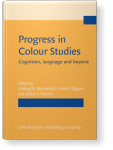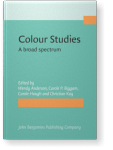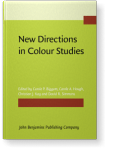Paul T. Sowden
List of John Benjamins publications for which Paul T. Sowden plays a role.
2018 Chapter 18. Does deuteranomaly place children at a disadvantage in educational settings? A systematic literature review Progress in Colour Studies: Cognition, language and beyond, MacDonald, Lindsay W., Carole P. Biggam and Galina V. Paramei (eds.), pp. 341–355 | Chapter
A review was conducted to explore possible consequences of deuteranomaly, a specific type of congenital colour vision deficiency (CVD), for children in education. Electronic searches of five databases were performed. Key search terms included: child*, colo?r vision, colo?r blind*, colour def*,… read more
2014 The evolution of GRUE: Evidence for a new colour term in the language of the Himba Colour Studies: A broad spectrum, Anderson, Wendy, Carole P. Biggam, Carole Hough and Christian Kay (eds.), pp. 53–66 | Article
The hue spectrum is a continuum of light, yet we perceive it categorically. The categories used to describe this continuum vary across the world’s languages and there are marked differences in the numbers of colour categories and the locations of category boundaries. For example, the green–blue… read more
2011 Colour and autism spectrum disorders New Directions in Colour Studies, Biggam, Carole P., Carole Hough, Christian Kay and David R. Simmons (eds.), pp. 281–292 | Article
There is converging evidence for atypical perception in those with Autism Spectrum Disorders (ASD). This chapter reviews a series of studies that have initiated the investigation of colour perception in ASD. Research is reviewed that identifies effects of colour on reading speed, visual… read more
2011 Chromatic perceptual learning New Directions in Colour Studies, Biggam, Carole P., Carole Hough, Christian Kay and David R. Simmons (eds.), pp. 433–444 | Article
Perceptual learning has been shown on a wide variety of achromatic visual tasks. However, very little work has explored the possibility of improvements on chromatically based tasks. Here, we used a transfer of learning paradigm to assess the specificity of improvements at discriminating the… read more


